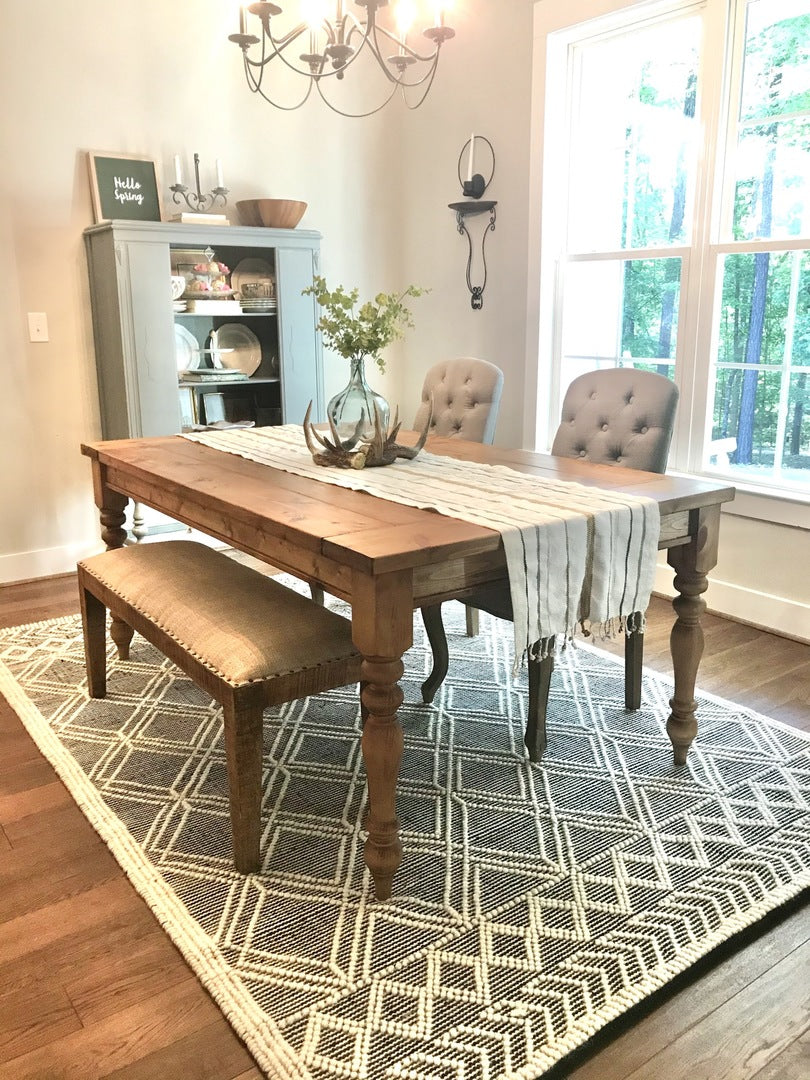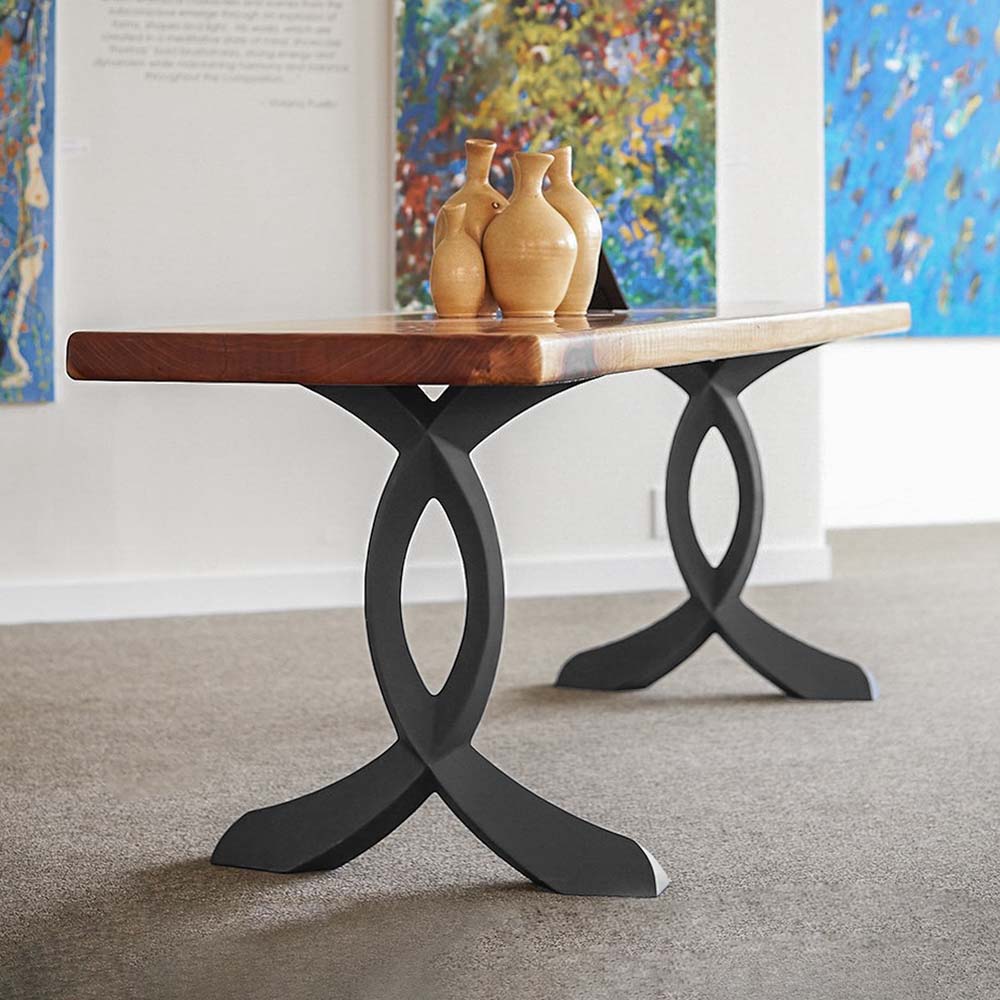Dining Room Table Legs That Integrate Functionality and Modern Design
An In-depth Take A Look At Table Leg Styles: Discovering the Suitable Suit
Choosing the best eating table leg design is crucial for both visual allure and functional capability. Standard four legs provide timeless style and stability, while the pedestal base gives enhanced legroom and a contemporary appearance. For those with larger tables, trestle legs guarantee strong support, whereas barrette legs present a mid-century modern-day vibe with their minimal style. The x-shaped legs blend modern design with improved security. Each of these choices brings unique benefits, making the choice greater than just an issue of choice. Explore additionally to discover which design perfectly enhances your dining room and lifestyle.
Conventional 4 Legs
Amongst the different types of dining table leg styles, the typical four-leg layout continues to be a classic option for lots of families. Four legs offer balanced assistance, making certain the table remains stable and qualified of birthing considerable weight (dining room table legs).
From an aesthetic perspective, the traditional four-leg style can be easily adapted to numerous interior styles. Whether crafted from timber, metal, or a combination of products, these legs can be delicately sculpted, sleek and minimalistic, or anything in between. Their versatility permits them to enhance both rustic and modern settings seamlessly.
In addition, the simple structure of the four-leg layout helps with simplicity of movement and positioning within a space. Unlike even more complicated bases, this style minimizes blockages, offering ample legroom for restaurants. In summary, the typical four-leg dining table leg design marries sustaining sophistication with useful functionality, making it a sharp selection for those looking for both form and feature in their dining furnishings.
Pedestal Base
Usually celebrated for its sophisticated and space-efficient design, the stand base is a distinguished option to the traditional four-leg setup in table leg designs. This unique base typically features a solitary central column supporting the table top, which can vary in kind, from ornately carved wood to streamlined, modern metal. Among the primary benefits of the stand base is its capability to make the most of legroom and seating adaptability. Without corner legs, diners are paid for greater flexibility of motion, making it a perfect option for round and oblong tables that advertise more intimate and comprehensive celebrations.
Moreover, the stand base's main support can handle significant weight, permitting making use of larger tabletops, such as marble or thick wood. This stamina combined with its visual convenience makes the pedestal base a popular selection in both traditional and contemporary indoor setups. It can flawlessly integrate with different layout motifs, from traditional style to minimal modernity. Additionally, the main column itself uses a canvas for complex styles and imaginative expressions, adding an element of aesthetic interest under the table. In recap, the pedestal base integrates functionality snappy, making it a refined and useful option for diverse dining environments.
Trestle Legs
Trestle legs give a durable and ageless structure for dining tables, characterized by their straight cross-bracing and strong support beam of lights. Stemming from middle ages times, this style has evolved yet retained its important structure, making it a seasonal fave in both traditional and modern settings. The main trestle beam of light, commonly supported by 2 or even more upright blog posts, provides extraordinary have a peek at this site security, permitting bigger table lengths without the demand for extra legs.
A substantial advantage of trestle leg tables is the adequate legroom they supply. Unlike tables with 4 corner legs, the lack of blockages at the table's sides offers unobstructed space for chairs and restaurants, boosting comfort and availability. This makes trestle tables excellent for suiting larger gatherings, see this website whether in a dining-room or a banquet hall.
The aesthetic convenience of trestle legs is notable. Readily available in a variety of materials such as timber, steel, and composite, they can be ended up to complement a variety of interior styles. From rustic farmhouse to sleek contemporary styles, trestle legs can be tailored to suit private preferences. Their long-lasting allure and useful advantages make trestle legs an engaging choice for those seeking both design and functionality in their table.
Hairpin Legs

The appeal of barrette legs hinges on their simplicity and convenience - dining room table legs. Available in a series of products, including steel and brass, they can be finished in many shades to complement different indoor designs. Whether coupled with a rustic wooden table top or a modern glass surface, hairpin legs effortlessly mix capability with a touch of vintage charm
Durability is an additional remarkable feature of barrette legs. Regardless of their fragile look, these legs are engineered to bear considerable weight, making certain the eating table remains stable and protected. Furthermore, they are reasonably easy to install, making them a popular choice for DIY enthusiasts and expert furniture makers alike.
X-Shaped Legs

Created from products such as steel, wood, or a mix of both, X-shaped legs can be customized to match various style choices. Steel legs typically provide a streamlined and industrial feeling, perfect for loft-style houses and modern-day eating spaces. On the other hand, wooden X-shaped legs provide a warmer, a lot more rustic charm, appropriate for farmhouse or diverse interiors. The flexibility in products allows property owners to tailor their eating tables to better fit their overall style plan.
Additionally, the engineering behind X-shaped legs makes certain even weight distribution, minimizing the risk of wobbling and improving toughness. This makes them especially fit for bigger eating tables that call for added assistance. Fundamentally, X-shaped legs mix sensible design with modern-day visual appeals, making them reference a timeless choice for diverse eating settings.
Verdict
A detailed understanding of eating table leg styles reveals the distinctive attributes and benefits of each layout. Trestle legs make sure robust assistance for larger tables, and barrette legs introduce a mid-century modern visual.